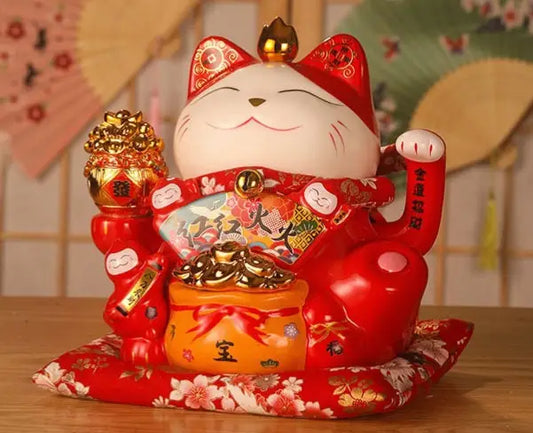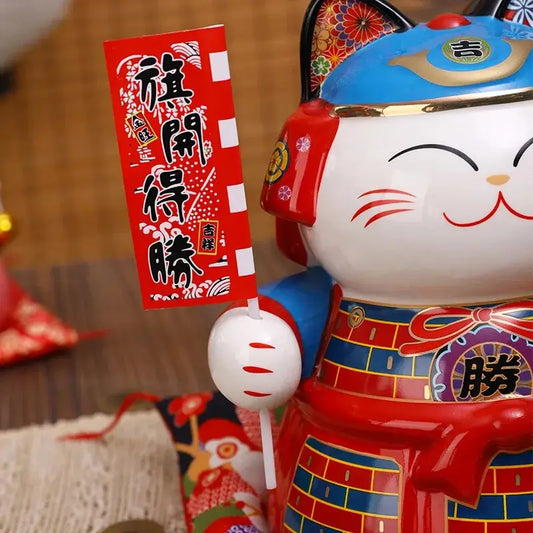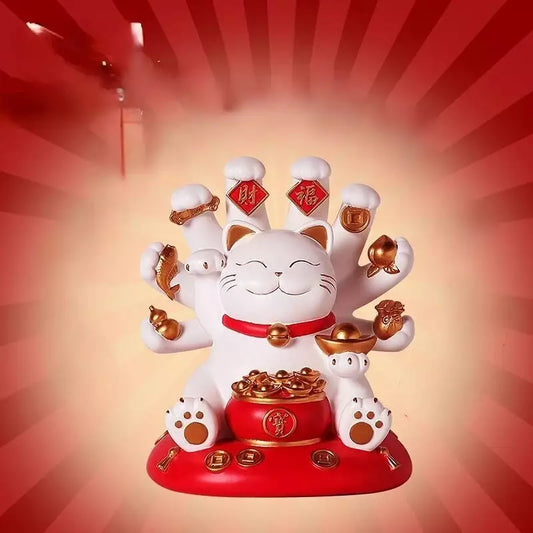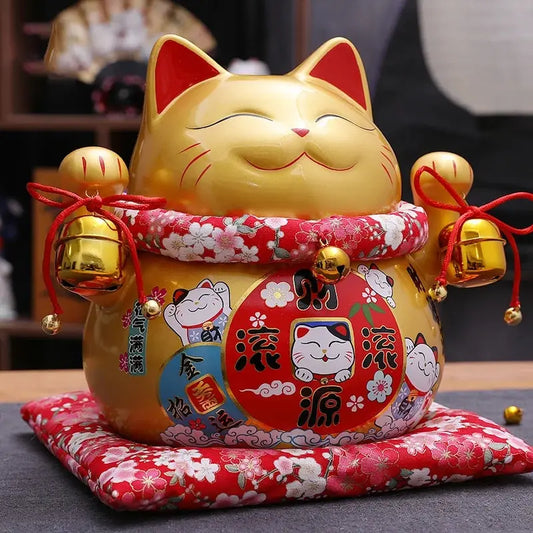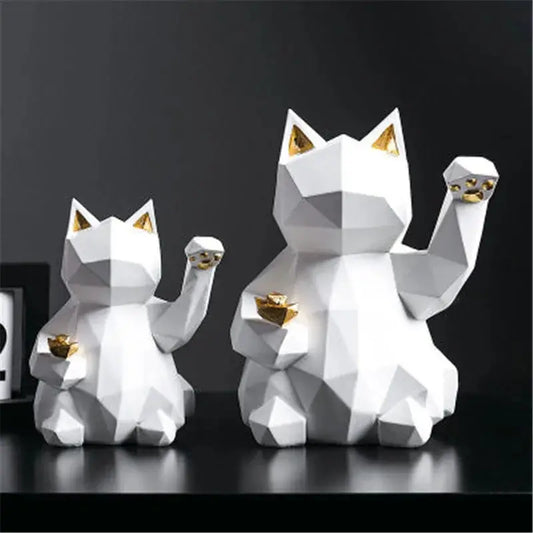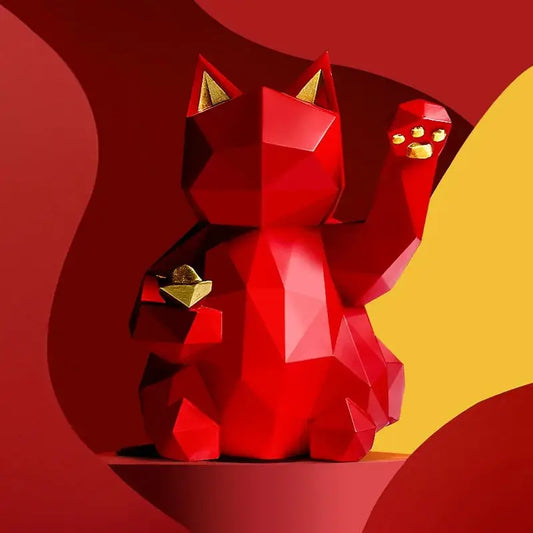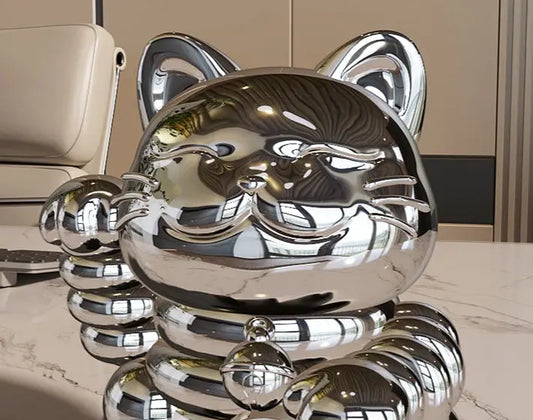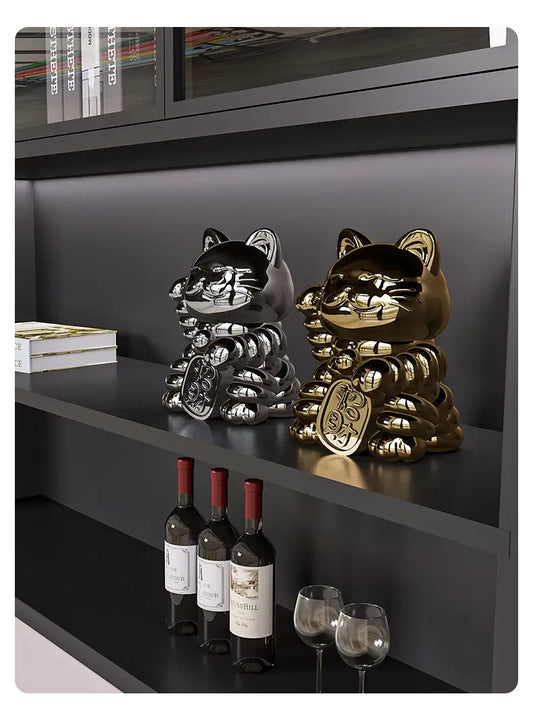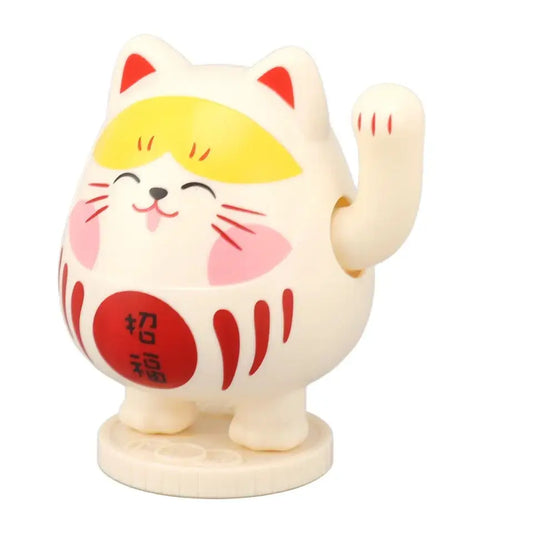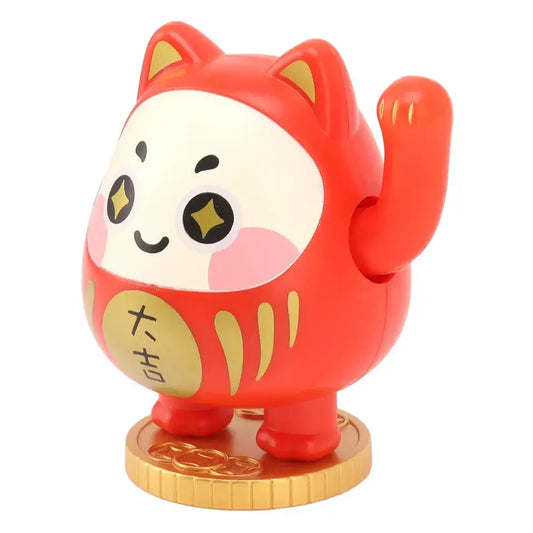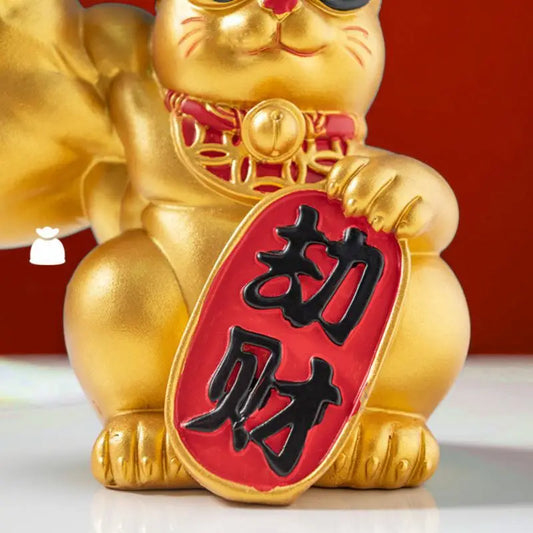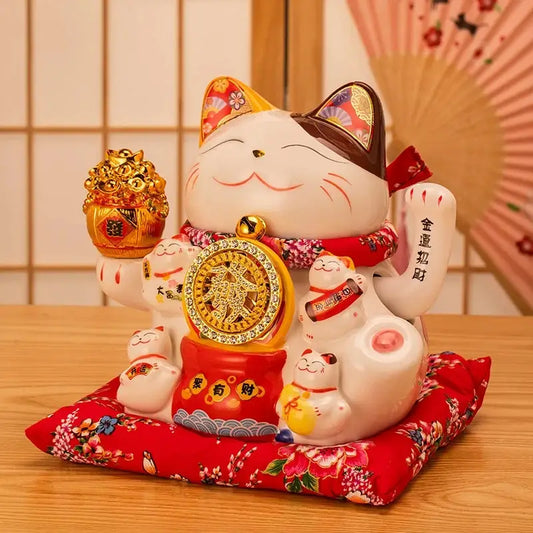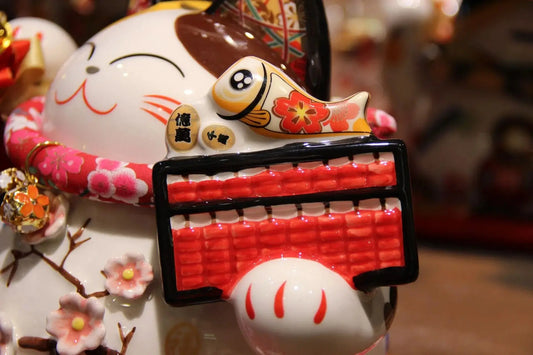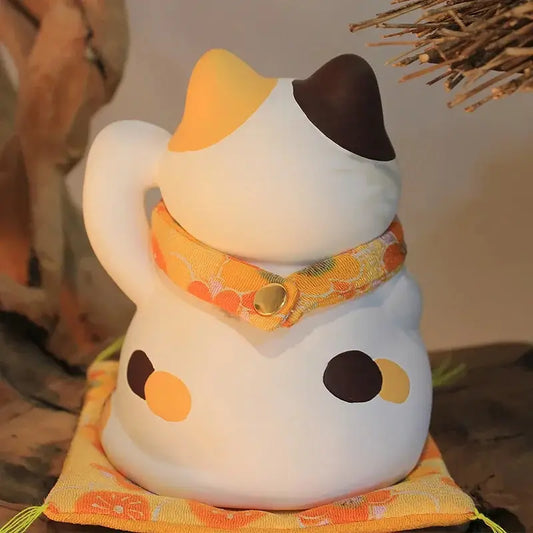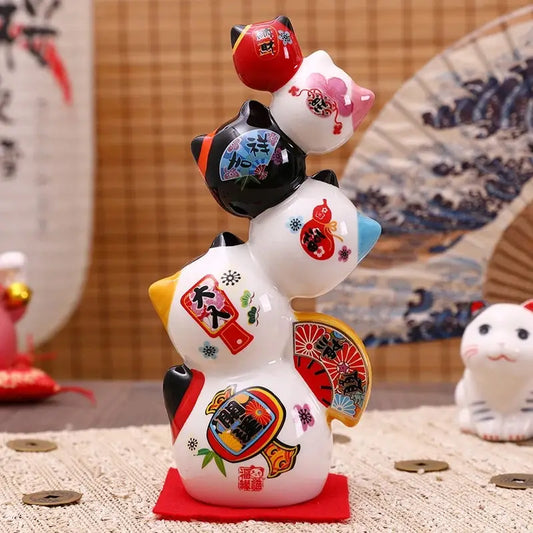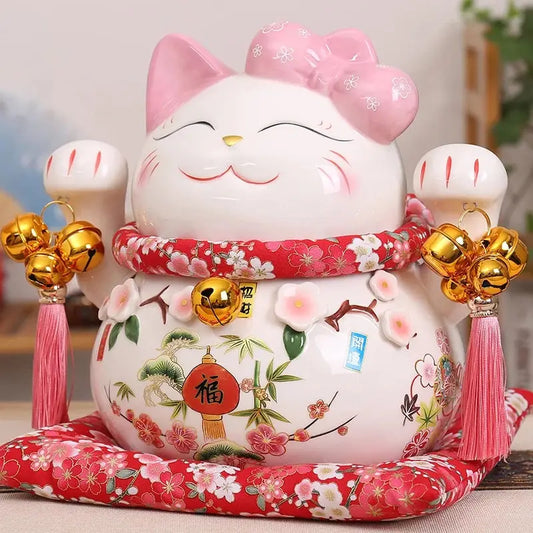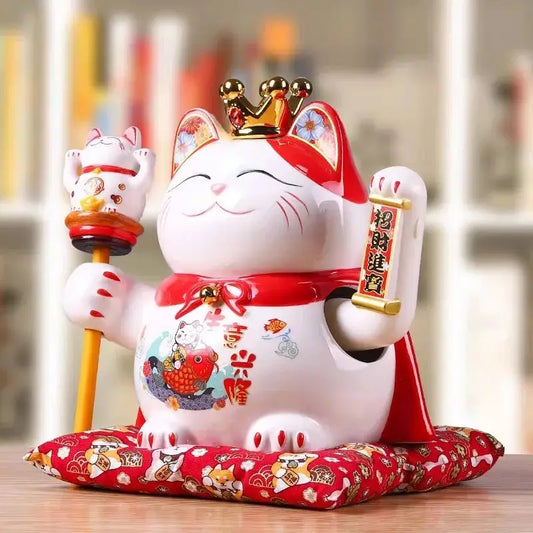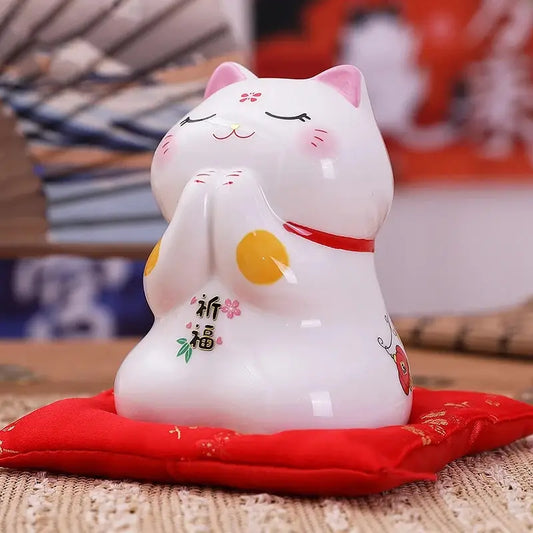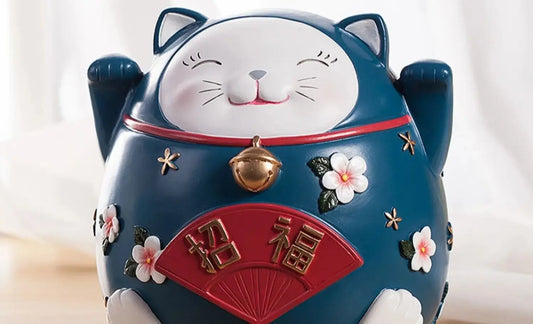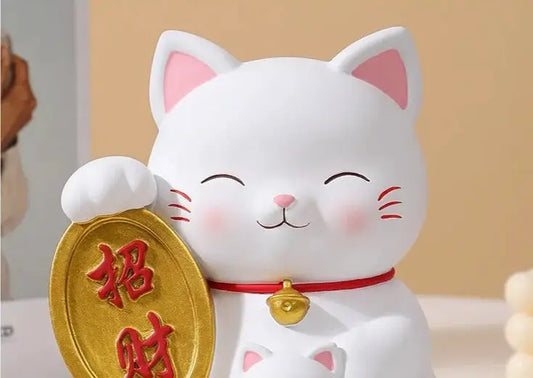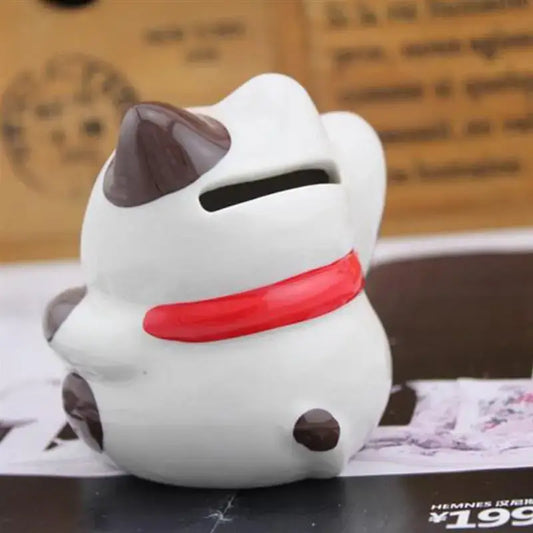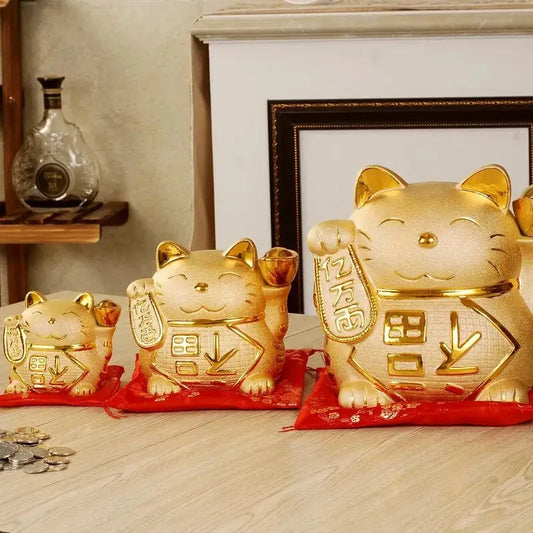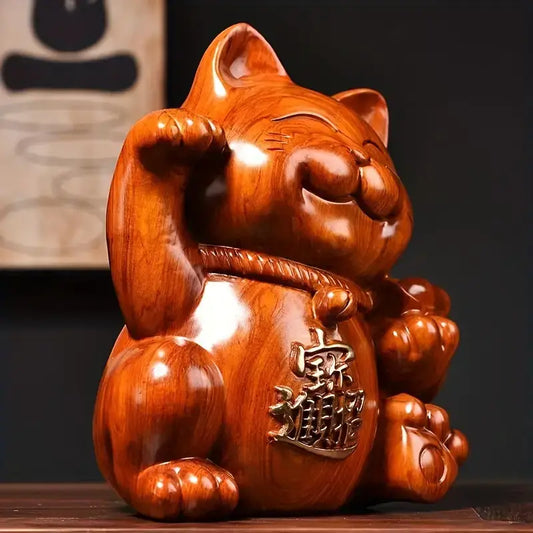Collection: Lucky Cats
-
Gold Bucket Waving Lucky Cat
Regular price $94 USDRegular priceUnit price / per -
Samurai Bushi Lucky Cat
Regular price $84 USDRegular priceUnit price / per -
Master Paw Lucky Cat
Regular price $155 USDRegular priceUnit price / per -
Golden Prosperity Lucky Cat
Regular price $62 USDRegular priceUnit price / per -
White Origami Sculpture Lucky Cat
Regular price From $44 USDRegular priceUnit price / per -
Red Origami Sculpture Lucky Cat
Regular price From $44 USDRegular priceUnit price / per -
Silver Puffy Lucky Cat
Regular price $58 USDRegular priceUnit price / per -
Golden Puffy Lucky Cat
Regular price $58 USDRegular priceUnit price / per -
White Daruma Waving Lucky Cat
Regular price $32 USDRegular priceUnit price / per -
Daruma Waving Lucky Cat
Regular price $32 USDRegular priceUnit price / per -
Golden Big Arm Lucky Cat
Regular price $42 USDRegular priceUnit price / per -
Strong Lucky Cat Champion
Regular price $42 USDRegular priceUnit price / per -
Long Tail Neko Lucky Cat
Regular price $69 USDRegular priceUnit price / per -
Drip Lucky Cat
Regular price $84 USDRegular priceUnit price / per -
Koi Neko Chunky Lucky Cat
Regular price $84 USDRegular priceUnit price / per -
Golden Bell Lucky Cat
Regular price $48 USDRegular priceUnit price / per -
Neko Lucky Cats Tower
Regular price $84 USDRegular priceUnit price / per -
Blossom Bells Lucky Cat
Regular price $78 USDRegular priceUnit price / per -
Royal Neko Lucky Cat
Regular price $94 USDRegular priceUnit price / per -
Praying Lucky Neko Cat
Regular price $33 USDRegular priceUnit price / per -
Blue Neko Ball Lucky Cat
Regular price $48 USDRegular priceUnit price / per -
White Neko Baby Lucky Cat
Regular price $38 USDRegular priceUnit price / per -
Adorable Neko Lucky Cat
Regular price $24 USDRegular priceUnit price / per -
Golden Neko Lucky Cat
Regular price From $38 USDRegular priceUnit price / per -
Wooden Maneki Neko Lucky Cat
Regular price $44 USDRegular priceUnit price / per
Receive Updates Right to Your Inbox 📬
Be the first to know about new collections and exclusive offers.
FAQ 🤔❓
How do I place an order?
Placing an order is simple! Navigate to the product you want to purchase, select the desired quantity and specifications, and click ‘Add to Cart’. Once you’ve added all your items, proceed to ‘Checkout’ and follow the instructions to complete your purchase.
Can I modify or cancel my order?
Once an order is placed, it is processed immediately to ensure quick dispatch. Therefore, modifications or cancellations cannot be guaranteed. Please contact our Customer Support team immediately if you need assistance.
Is it safe to shop on your site?
Absolutely! We use industry-standard encryption technologies and secure servers to protect your information.
How can I track my order?
After your order has been dispatched, you will receive an email containing your tracking number and a link to track your package.
How long will it take for my order to arrive?
Our standard shipping time is between 12 to 28 business days. However, delivery times may vary depending on your location and any potential shipping delays.
Maneki Neko - Cultural Significance
The Maneki-Neko, commonly known as the "Lucky Cat" or "Beckoning Cat," is an iconic figure recognized worldwide. Often seen perched upon store countertops, near cash registers, or as decorative items in homes, these charming feline figurines are more than just ornamental. They carry with them a rich history and significance, particularly in Japanese culture. This essay will delve into the origins, symbolism, and cultural importance of the Lucky Cat.
The exact origins of the Maneki-Neko are shrouded in mystery, with various legends and stories associated with its inception. One of the most popular tales involves a struggling temple in Tokyo during the Edo period. A priest, despite his poverty, shared his meager meals with his pet cat. One day, a wealthy samurai took shelter under a tree near the temple during a rainstorm and noticed the cat seemingly beckoning him.
Intrigued, he approached the cat and the temple, and shortly after, lightning struck the tree he had previously been under. In gratitude for saving his life, the samurai became a benefactor of the temple, leading it to prosperity. When the cat passed away, it was honored with a statue, which is believed to be the first Maneki-Neko.
The Maneki-Neko carries a plethora of symbolic interpretations. Its most evident gesture, the raised paw, is a universal sign of beckoning. Depending on which paw is raised, the symbolism can differ:
1. Left Paw Raised: Attracts customers and is often placed in businesses to beckon prosperity.
2. Right Paw Raised: Brings good luck and wealth.
3. Both Paws Raised: Offers protection and welcomes all good things.
The color of the cat also holds significance:
- White: Purity and happiness
- Black: Wards off evil spirits
- Green: Safety and family protection
- Gold: Wealth and prosperity
- Pink: Success in love and relationships
Many Maneki-Neko figures also hold items like a koban coin, inscribed with the phrase "sen-man ryo," which translates to "10 million gold pieces," signifying wealth and good fortune.
While the Lucky Cat originated in Japan, its influence has spread across various Asian cultures and even globally. In Japan, it's common to find these figures in businesses, especially in small shops and restaurants. The cat’s allure isn’t limited to business owners; even tourists find them captivating, purchasing them as souvenirs or gifts.
In other Asian countries, such as China, the Lucky Cat has been assimilated into local culture. It is believed to bring prosperity and ward off evil spirits. The widespread adoption and adaptation of the Maneki-Neko is a testament to its universal appeal.
The Maneki-Neko, or Lucky Cat, is more than just a decorative item. It symbolizes hope, prosperity, and protection. Its rich history and varied interpretations make it a fascinating subject of cultural study. Whether one believes in its mystical powers or simply enjoys its aesthetic appeal, the Lucky Cat remains a cherished icon, transcending borders and bridging cultures. As with many traditional symbols, the true power of the Maneki-Neko might just be in the shared human desire for good fortune and well-being.


